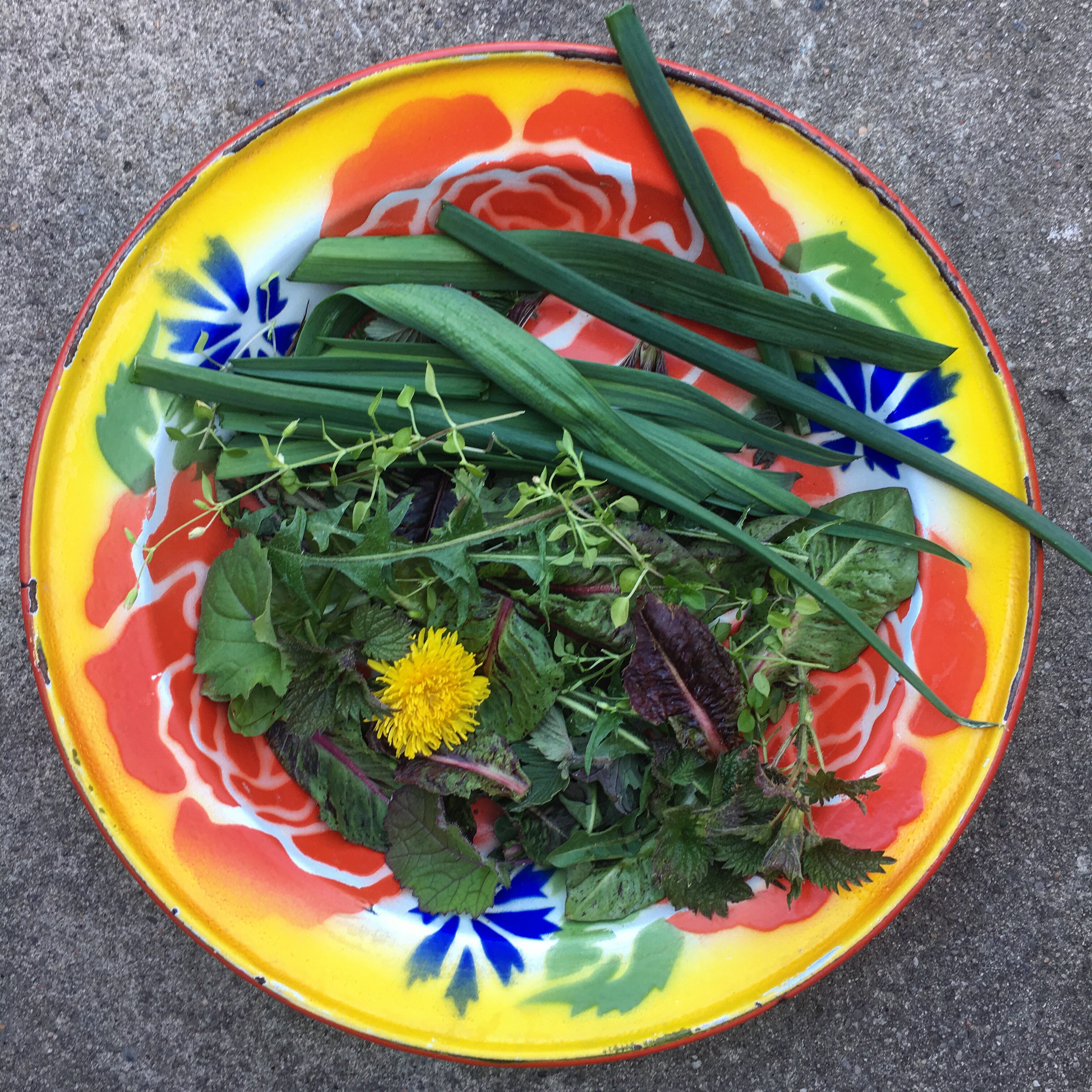
Small, but meaningful shifts are taking place in the garden. Over the weekend (April 13), I made my first, small leafy greens harvest of the season. It included: Radicchio, dandelion, stinging nettle, garlic, ‘Egyptian Walking’ onion, bloody dock, and strawberry leaves, as well as some chickweed, kale, and dandelion (including a flower) that are further along due to the slightly warmer and protected environment on my unheated front porch. Radicchio is such an under-rated plant. Mine are self-perpetuating from seed I tossed down several years ago. They last through the harshest winters and are often the first edible that I am able to harvest in the spring, all with zero work required. Strawberry leaves are not my favourite perennial edible as they are a bit sour like sorrel, and get to be tough very quickly. However, I have wild and alpine types free-growing as an understory plant all over my garden, so they are abundant and worth using in small amounts when other greens are not yet available. Stick to harvesting the newest, shiniest, and softest leaves only. I cook most of my leafy greens harvests so this is another reason why I find them tolerable. You can add a few to smoothies if you want to consume them raw.
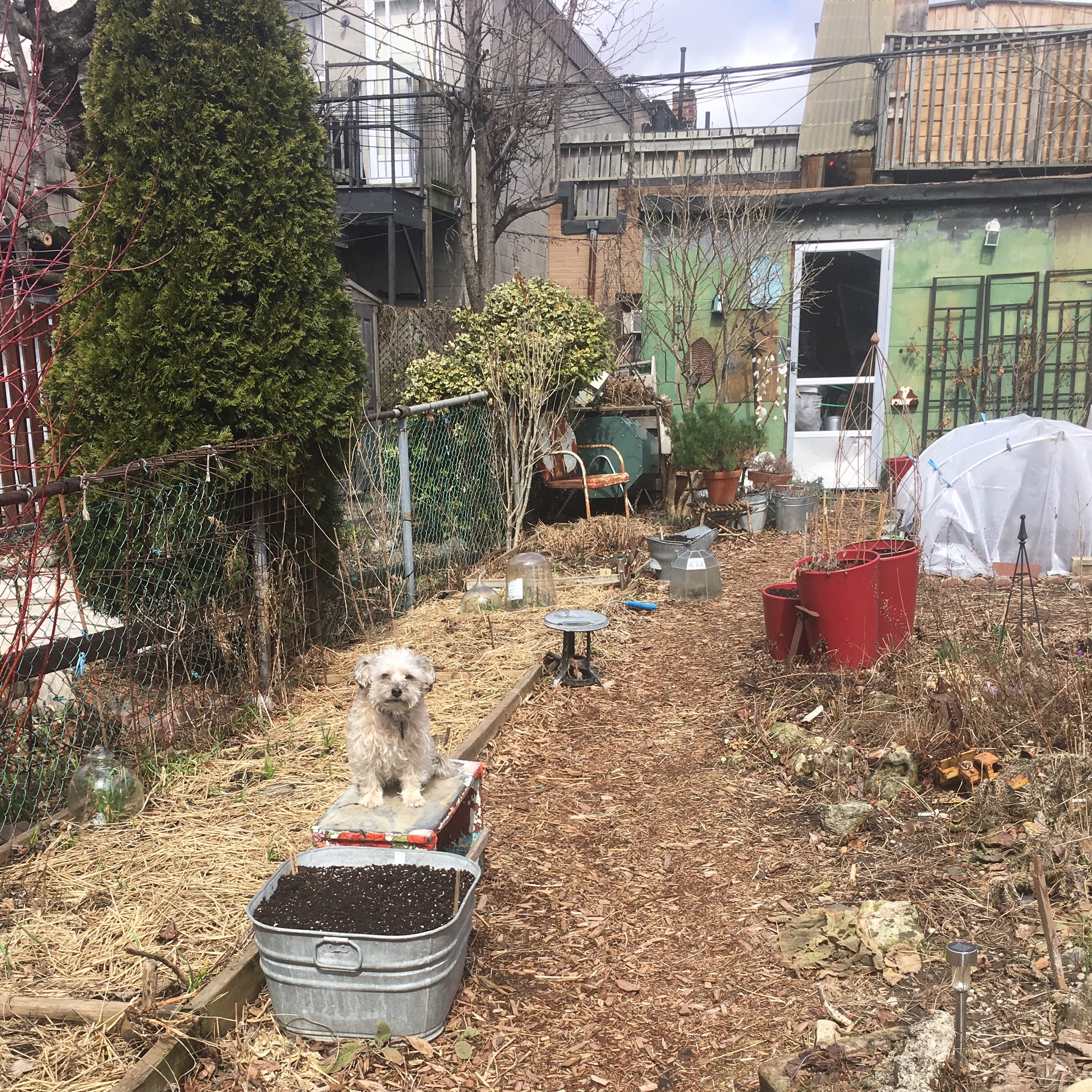
Exploring the garden yesterday afternoon revealed more perennial and self-seeding edibles that are beginning to make their annual debut:
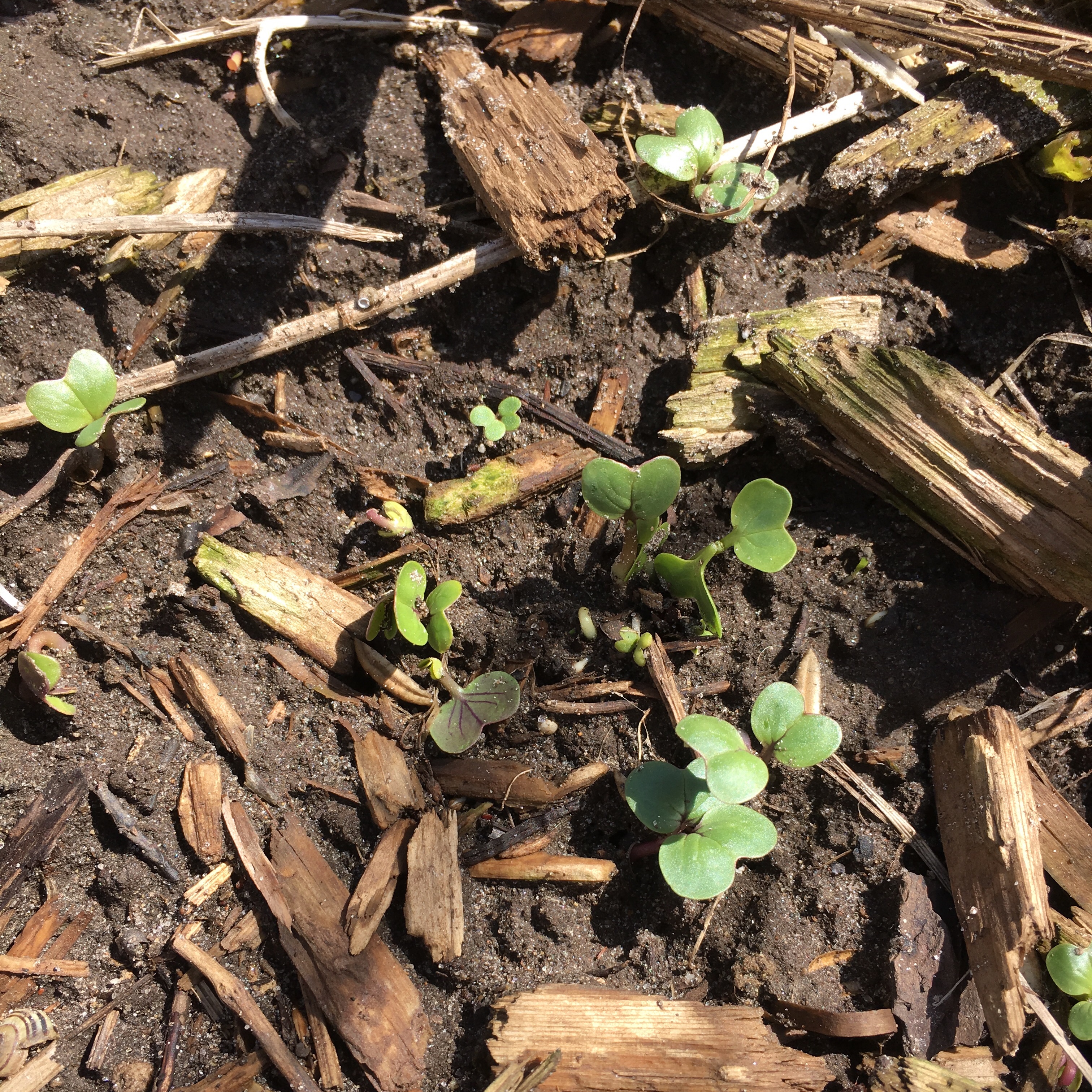
Self-seeded radish and other brassica seedlings have emerged. While I do still direct sow mustard greens and radish and have several going underneath the hoop house, I also allow it to self-seed in the previous season. Interestingly, I find that the self sown seeds always come up faster than the new seed. I believe this is because they are more adapted to the conditions of my garden, having been here for several years. Self-sown seed tend to come up thickly. Don’t toss the thinnings! They’re great on salads or sandwiches, or anywhere you want a sharp, brassica bite. I added some to my first leafy greens harvest of the season.
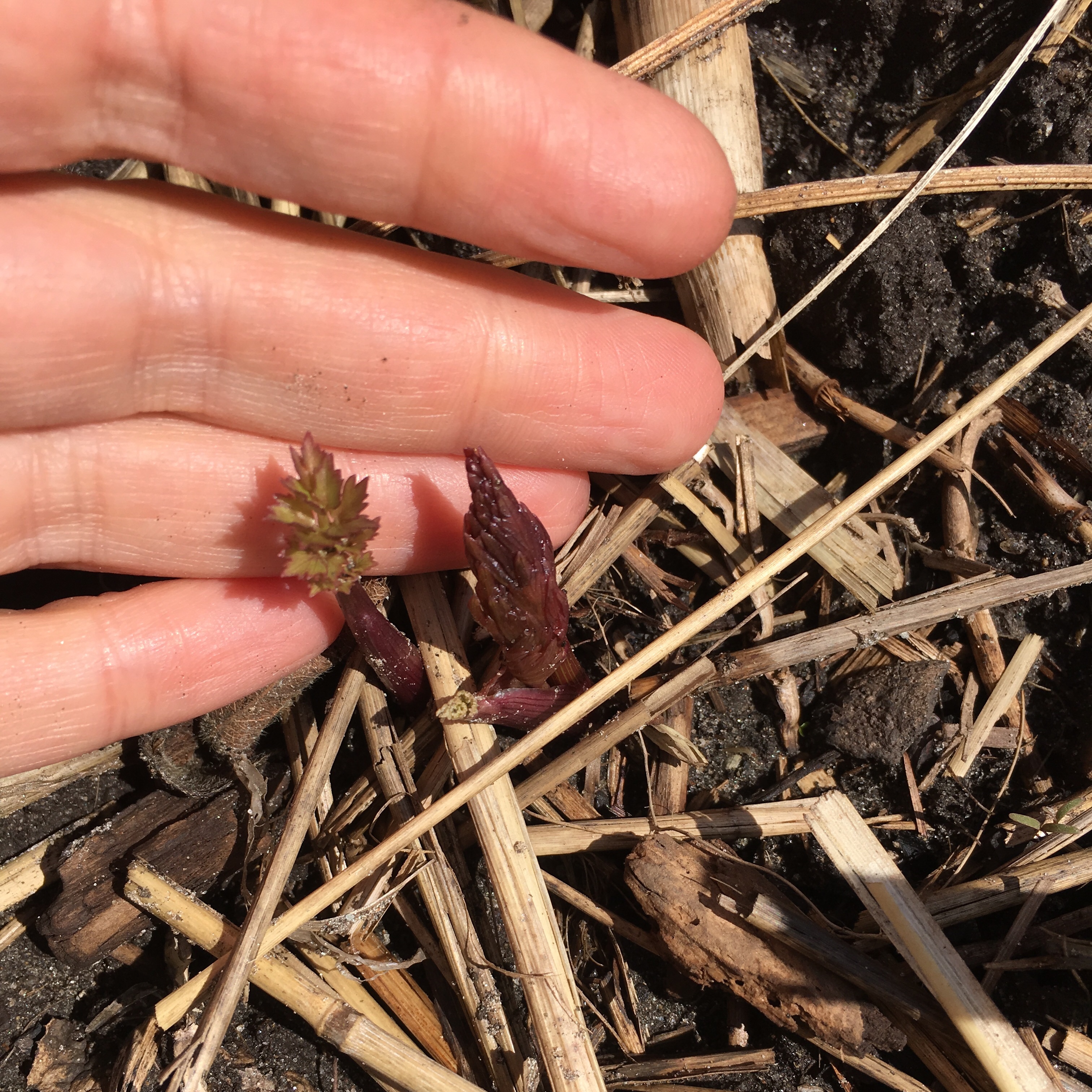
Lovage (Levisticum officiale) is peeking up above the soil line. Lovage is a large, perennial herb in the Apiaceae family (celery, parsley, etc) that grows in abundance, which is a good thing because we use the fresh plant abundantly. The flavour is strong, like a sharp and more intensely savoury celery. I’ve written before about how a few fresh or charred leaves transforms a chicken soup. My partner Davin takes advantage of their abundant leafy stalks to provide a bed on which to roast chicken. Use the hollow stems as a flavoured drinking straw for tomato-based concoctions.
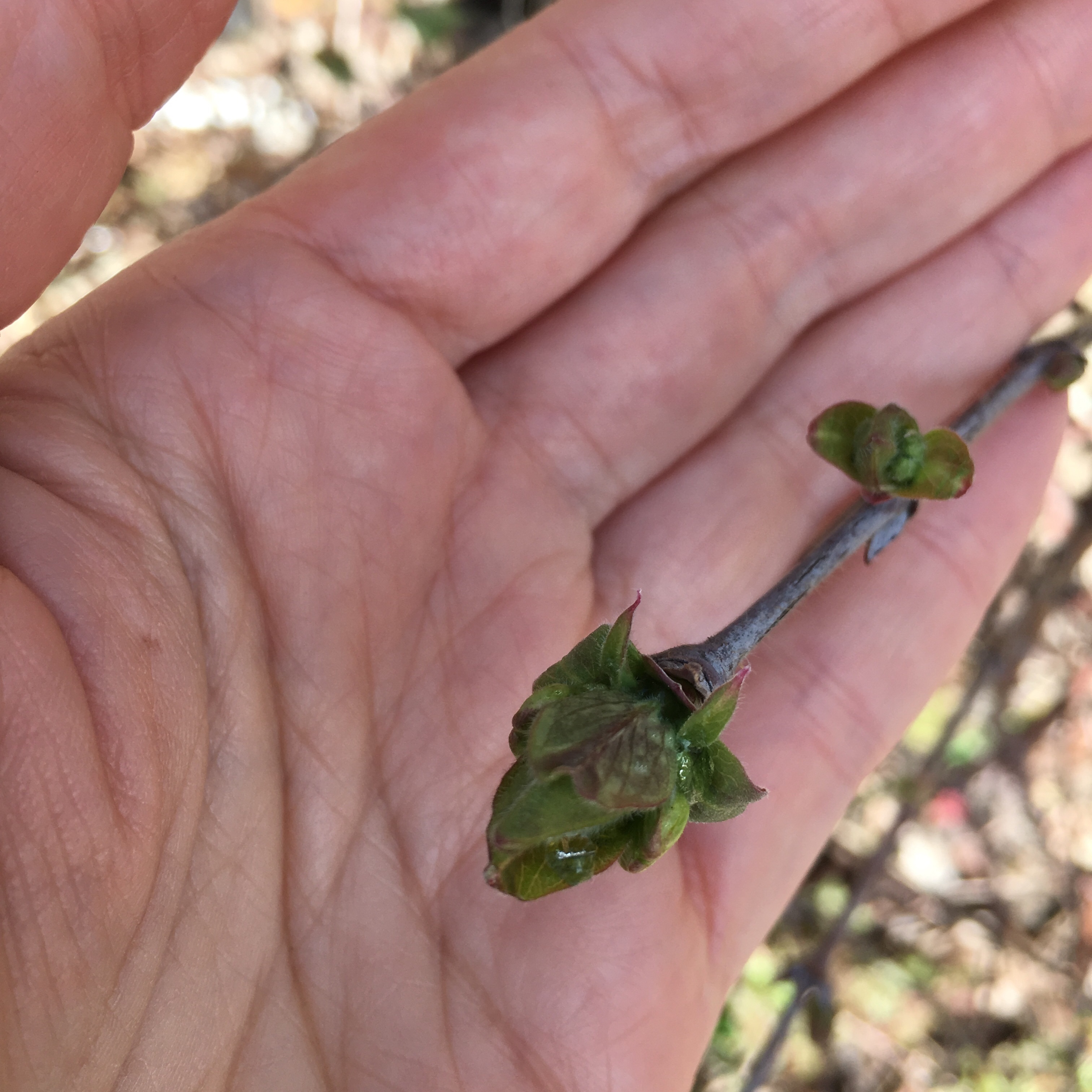
Haskap aka honeyberry (Lonicera cerulean) is the first of several edible berry bushes in my garden to leaf out and flower. When I originally put this plant in several years back, I had two. You need two from different varieties for them to cross-pollinate and produce well. Unfortunately, they were both very small and only one survived. Last spring I finally purchased and planted a replacement, but because haskap is so early, it was already too late in the season to get a crop. I’m hoping this year to FINALLY start producing fruit. The only remaining issue is that I bought a different variety, as I’d lost the page from the surviving first. I’d love to add more haskap bushes to the garden, but space is absolutely full. However, I have a flowering quince that has never produced much viable fruit (they are also very tiny) that I am considering removing. Of course, last spring, the bush put on a big flowery show, which made me reconsider. It’s like they know…
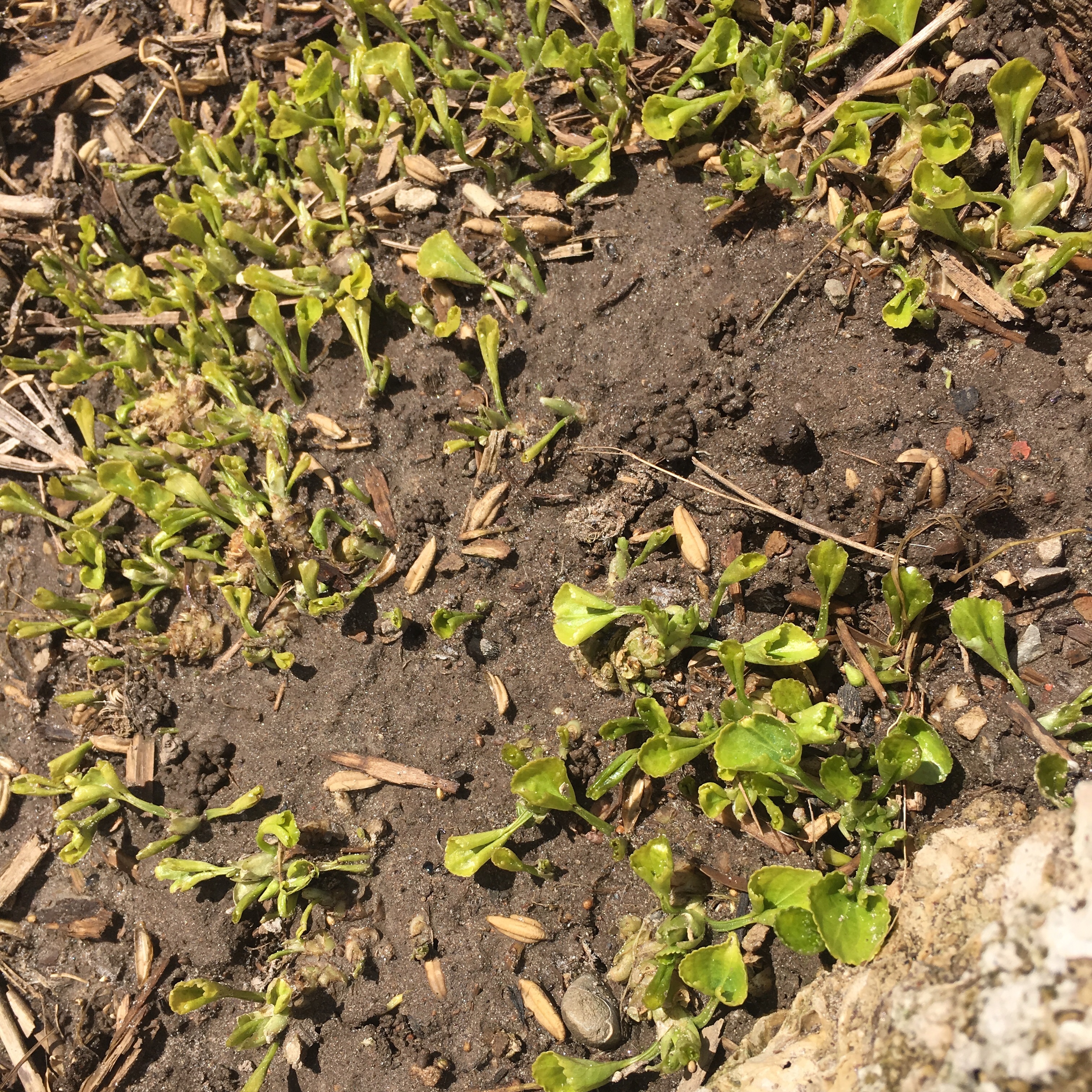
Violets (Viola spp.) are beginning to leaf out. I can’t wait!! Over the years violets have crept up into my top five of favourite perennial edibles. The leaves are a reliable, abundant, and very early edible that is available straight through the season, although they can become a little too tough mid-summer. I infuse them into oils and alcohol-based tinctures for medicine making. I’d be lost without this plant and have given up quite a lot of space to them as a result. The good news is that they are happy as an understory plant in the shade of taller perennials and bushes, so fitting them in is not difficult. In addition to their many fresh uses, I dehydrate the leaves for winter use, adding them crumbled into broths and soups. I store them in paper bags or glass jars and my 2018 harvest will be all used up just in time to begin harvesting the new crop within the next few weeks. Read more about using violets over here…
I love the surprise when something pops up that I had forgotten about over the long winter. I scattered radish thinnings over quesadillas last night, a nice easy use. happy spring!
I’m glad to see you mention lovage. I started it from seed and am hoping mine will come back year after year- it’s my first time growing it. I’ve been eating some early lettuce, leaf beet chard and purple dead nettle (another new one for me- it’s always been in my yard but I just discovered it was an edible, too). I still have a lot to learn.
Glad I read this to know you need 2 different varieties of honeyberry. I found some at Stark Brothers, but some are sold out. Maybe next year, as I still have to plant my baby black currants I have had for a month. I have been carrying them in and out according to weather and are looking strong enough to put in the ground now. Like you, I am running out of room. I am considering getting read of my blackberries which haven’t done very well yet, but of course this spring are going crazy…lol
I’m glad your’e happy with so many violets! I wish I had seen your photo a few weeks ago, when mine were still “mystery” plants where I did not want them! When I removed them to build a bed I must have released a spray of seed, flinging them over the entire surface! When they come up they looked like something I’d sown by tossing seed. Don’t get me wrong, they are beautiful and I do love them… just not in my herb bed!
I don’t have anything popping yet here in Michigan. I usually have radishes and lettuce coming in early (self-seeding).